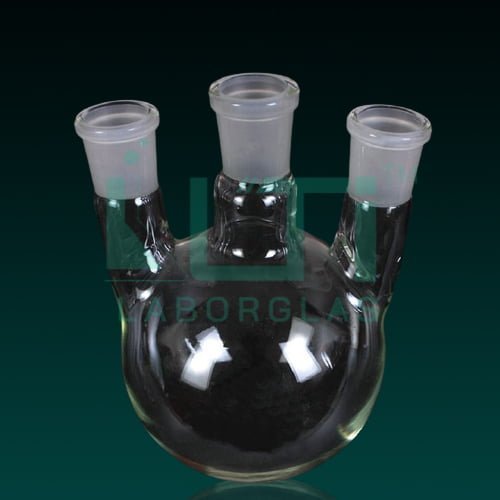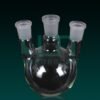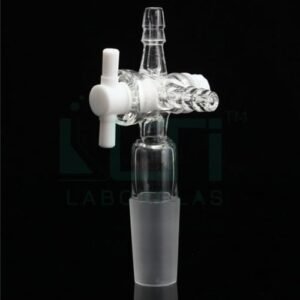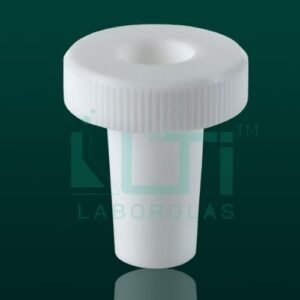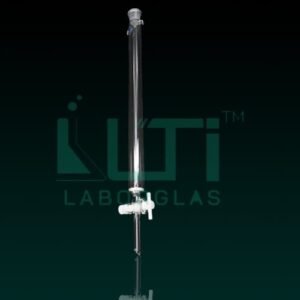- Made from ASTM E-438 Type 1, Boro 3.3 heat resistance glass
- Available Three Neck Parallel
- Complies with ASTM & USP standard
| PART No. | Capacity (ml) | Centre Size | Socket Size | PACK Qty. |
| 5650-100 | 100 | 14/20 | 14/20 | 1 |
| 5650-100-A | 100 | 24/40 | 24/40 | 1 |
| 5650-250 | 250 | 24/40 | 24/40 | 1 |
| 5650-500 | 500 | 24/40 | 24/40 | 1 |
| 5650-500-A | 500 | 29/42 | 29/42 | 1 |
| 5650-1000 | 1000 | 24/40 | 24/40 | 1 |
| 5650-1000-A | 1000 | 29/42 | 29/42 | 1 |
| 5650-2000 | 2000 | 24/40 | 24/40 | 1 |
Here are some common uses for a 3-Neck Parallel Round Bottom Flask in a laboratory:
- Parallel Reactions: The primary use is for conducting multiple reactions simultaneously. Each neck can be used for a different reaction, allowing researchers to increase experimental throughput.
- Distillation and Fractionation: The flask is suitable for distillation setups where different components of a mixture can be collected through each of the three necks. This is particularly useful for fractionation processes, enabling the separation of components with different boiling points.
- Refluxing: The flask allows for reflux setups where one or more necks can be used for condensers, and the others for adding reagents or other equipment. This is useful for reactions that require prolonged heating.
- Simultaneous Sampling: The multiple necks enable researchers to collect samples from different reactions simultaneously, facilitating efficient monitoring of reaction progress.
- Temperature Control Experiments: One or more necks can be used for inserting thermometers or temperature probes, enabling precise temperature control for each reaction.
- Gas Inlet/Outlet: One or more necks can be used as gas inlets or outlets, allowing for reactions involving gaseous reactants or by-products. This is particularly relevant in gas-phase reactions or reactions requiring controlled atmospheres.
- Complex Reaction Setups: The flask provides flexibility for creating complex experimental setups involving various reaction components, monitoring devices, or additional reagents.
- Parallel Distillation: Similar to parallel reactions, the flask can be used for parallel distillation, enabling researchers to simultaneously distill multiple samples.
- Multi-Step Synthesis: The multiple necks allow for the setup of multi-step synthesis reactions where different reactants are added at distinct stages of the experiment.


